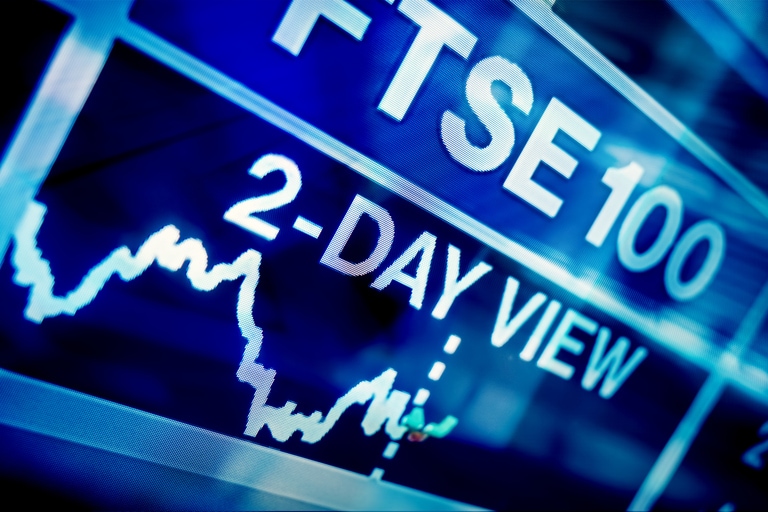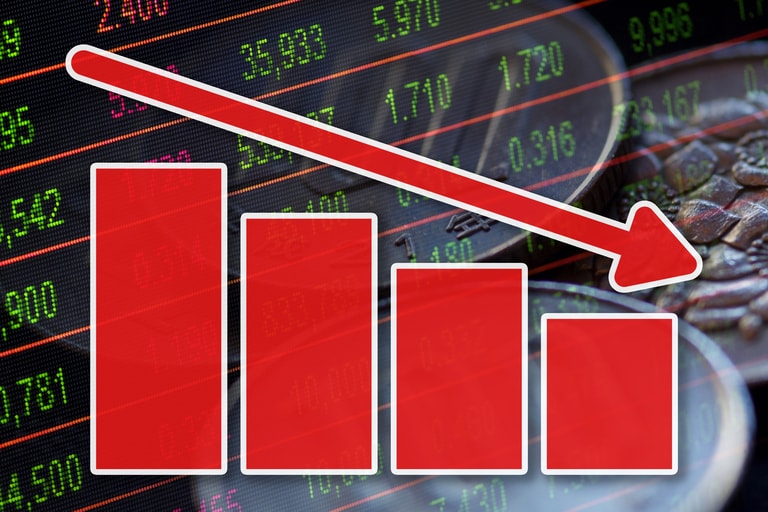After a fairly low-key start to the day, European markets eventually finished the day lower yesterday, dragged lower by weakness in US markets after Fed chairman Jay Powell’s semi-annual testimony to US lawmakers on Capitol Hill.
Any prospect that we might see a dovish Powell yesterday was quickly dashed as the Federal Reserve chairman struck quite a different tone to the one he used at the last FOMC press conference. While markets focussed on his comments about disinflation at the beginning of February, there was only one mention of that word in his statement, in his remarks to US lawmakers yesterday, and that was to say there was little sign of it.
His comments that the pace of rate hikes may need to be accelerated, and that the likely rate peak could well be higher than expected were not well received by markets, but given the strength of recent data, the change of tone shouldn’t have been surprising.
The Fed has always insisted it is data dependent and Powell’s comments appear to reflect that, given the strength of recent data, which means as strong as yesterday’s reaction was, with 2-year yields pushing above 5% for the first time since 2007, it could just as quickly reverse if this week’s payrolls data or next week’s CPI numbers disappoint.
We do have other labour market indicators due out today with the February ADP payrolls report which is expected to see an improvement from 106k in January to 200k We also have the latest job openings (JOLTS) data for January. Given the strength of the January payrolls report of 517k, you would expect to see a sharp drop in vacancies from December’s 11m to about 10.6m.
Powell’s comments did something else yesterday as markets started to price in the prospect of a 50bps rate hike in 2 weeks’ time, despite stepping down the pace of rate hikes in February to 25bps.
If the Fed were to step back up to 50bps in 2 weeks’ time it would be tantamount to an admission of failure and that they made a mistake, and open up the central bank to accusations of being too reactive, and flip-flopping. Such a move would probably be unwise and open the central bank of not knowing what it is doing. Far better to follow through with another 25bps and raise their dot plots indicating that several more 25bps hikes are likely to follow.
While US markets finished sharply lower, both the S&P500 and Nasdaq 100 still remain above their 200-day SMA which acted as strong support last week.
With the European Central Bank also making loud hawkish noises and likely to hike by 50bps next week, the weakness in equity markets also translated into lower commodity prices on increasing concerns over the effect of what higher rates for longer might mean for global growth prospects.
Staying on the central banks front we have the latest rate decision from the Bank of Canada later today, and where it is expected to keep rates on hold.
At its last meeting in January, the Bank of Canada decided that it would take the decision to signal a pause in its rate hiking cycle after its latest rate rise of 25bps took the headline rate to 4.5%. The central bank did indicate that the pause was conditional on inflation coming down, however, the decision to signal a pause with hindsight, given the strength of recent data does come across as a little hasty, especially given Fed chair Jay Powell’s hawkish tone yesterday.
Headline CPI in Canada has fallen to 5.9%, but core prices still look sticky at 5%, and recent economic data has shown the economy looks resilient.
Consumer spending has held up well in recent months, while January payrolls also saw a huge jump of 150k, with most of them being in full-time employment. The participation rate also surged to 65.7%, a sharp rise from 65.4%. The Bank of Canada may have to settle for delivering hawkish guidance along with a hold.
As for today’s European session, we look set to see a lower open on the back of yesterday’s sharp US sell-off, with the focus in Europe on German retail sales for January and the final iteration of EU Q4 GDP which is expected to see be revised lower from 0.1% to 0%.
EUR/USD – looks set to retest the previous lows at 1 0530 with the prospect we could see a retest of the 1.0480 area. The 1.0730 area remains a key resistance.
GBP/USD – falling below the 200-day SMA has seen the pound fall to the 1.1820/30 area, opening up the prospect that we could slide towards 1.1640 on a break below the 1.1800 area. Resistance back at the 1.1980 area.
EUR/GBP – broken through the trend line resistance at 0.8900 from the January peaks and could see a move towards the 0.8980 area. We need to push below support at the 0.8820/30 area to retarget the 0.8780 area.
USD/JPY – has retested the 200-day SMA which is now at 137.20, with a break through the 137.30 opening up the 138.20 area. Support comes in at the 135.20 area. We also have interim support at 133.60.
CMC Markets erbjuder sin tjänst som ”execution only”. Detta material (antingen uttryckt eller inte) är endast för allmän information och tar inte hänsyn till dina personliga omständigheter eller mål. Ingenting i detta material är (eller bör anses vara) finansiella, investeringar eller andra råd som beroende bör läggas på. Inget yttrande i materialet utgör en rekommendation från CMC Markets eller författaren om en viss investering, säkerhet, transaktion eller investeringsstrategi. Detta innehåll har inte skapats i enlighet med de regler som finns för oberoende investeringsrådgivning. Även om vi inte uttryckligen hindras från att handla innan vi har tillhandhållit detta innehåll försöker vi inte dra nytta av det innan det sprids.






